Understanding fractions Geometry Worksheets for Ages 5-9
36 filtered results
-
From - To
Unlock the magical world of geometry with "Understanding Fractions Geometry Worksheets for Ages 5-9!" specially crafted to foster a solid understanding of basic fractions. Our worksheets blend fun and learning, guiding young minds through enjoyable exercises designed to visually and practically conceptualize fractions. Perfect for at-home learning or classroom activities, these worksheets offer engaging challenges and colorful illustrations that capture children's interest while reinforcing key mathematical concepts. Delightfully comprehensive and easy to follow, we make fractions accessible and enjoyable for your budding mathematicians. Boost confidence and classroom success with our expertly designed learning resources.
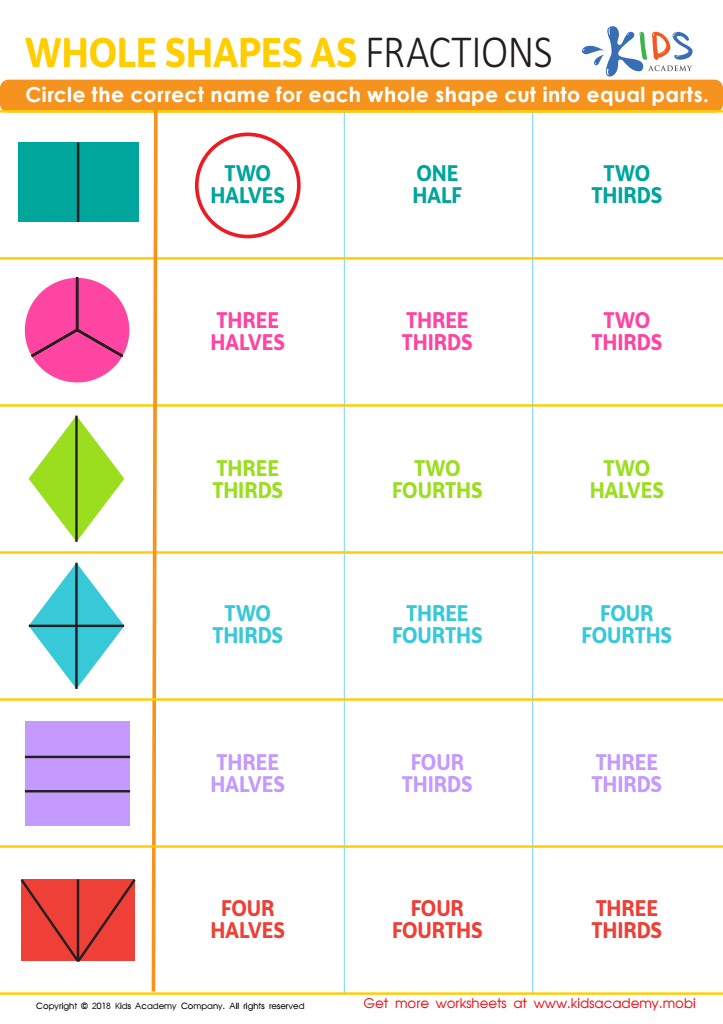

Whole Shapes as Fractions Worksheet
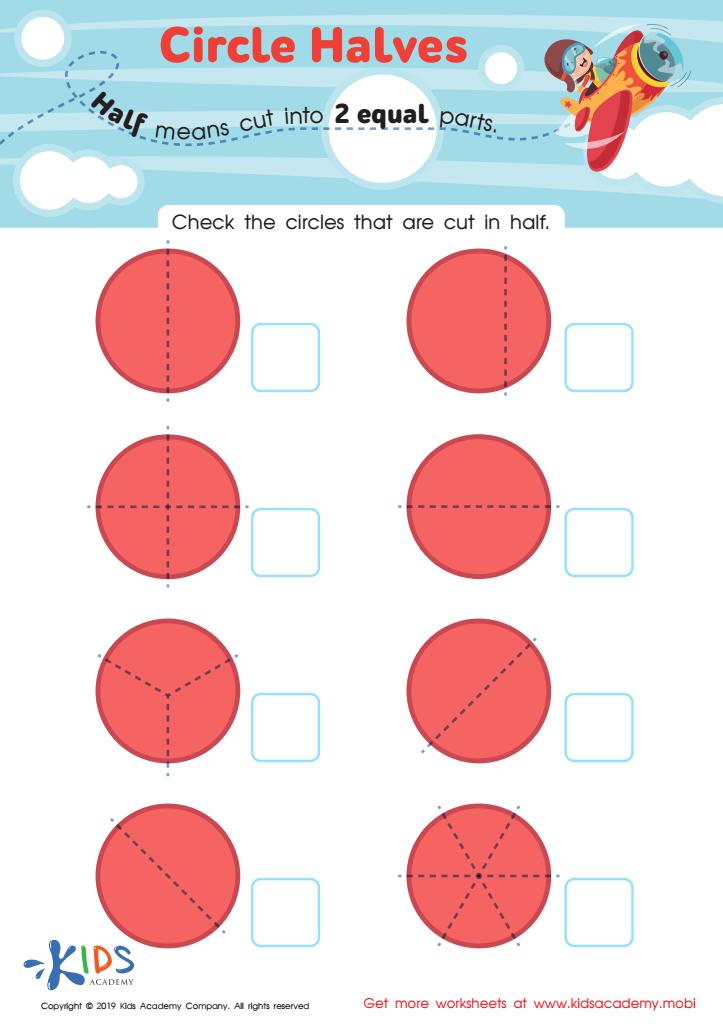

Circle Halves Worksheet
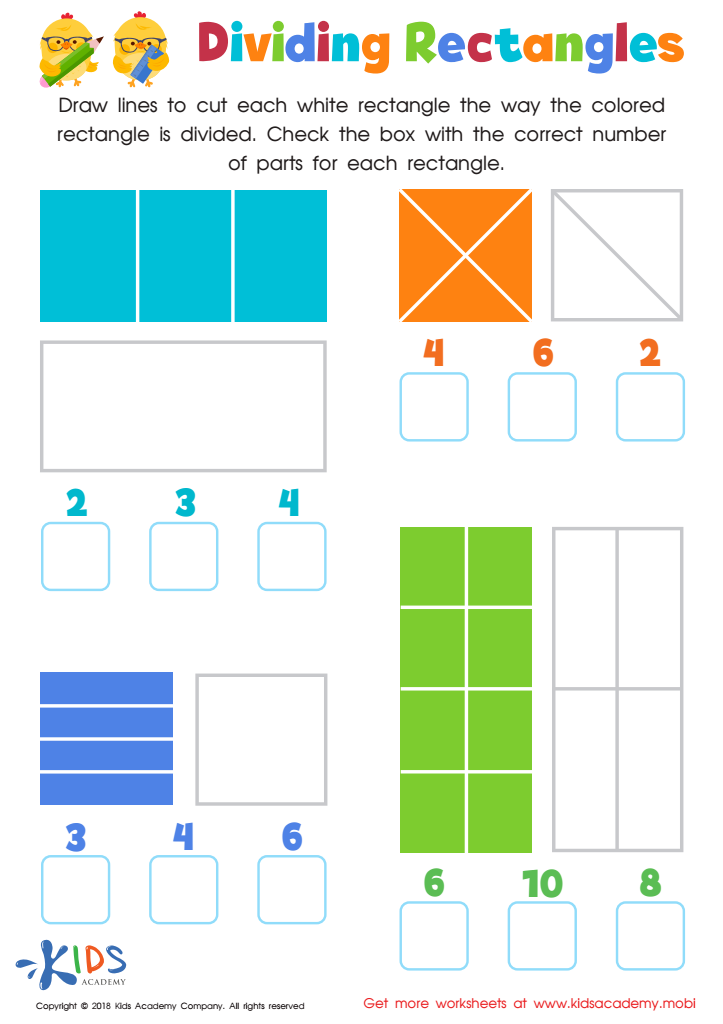

Dividing Rectangles Worksheet
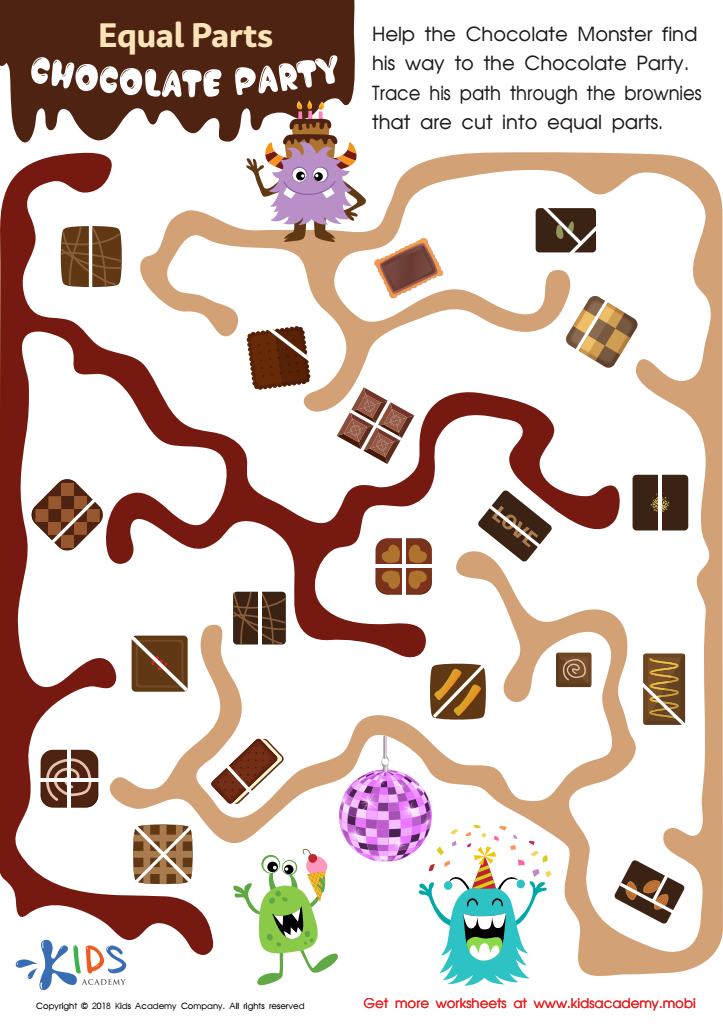

Equal Parts: Chocolate Party Worksheet


Halves and Wholes on the Clock Worksheet
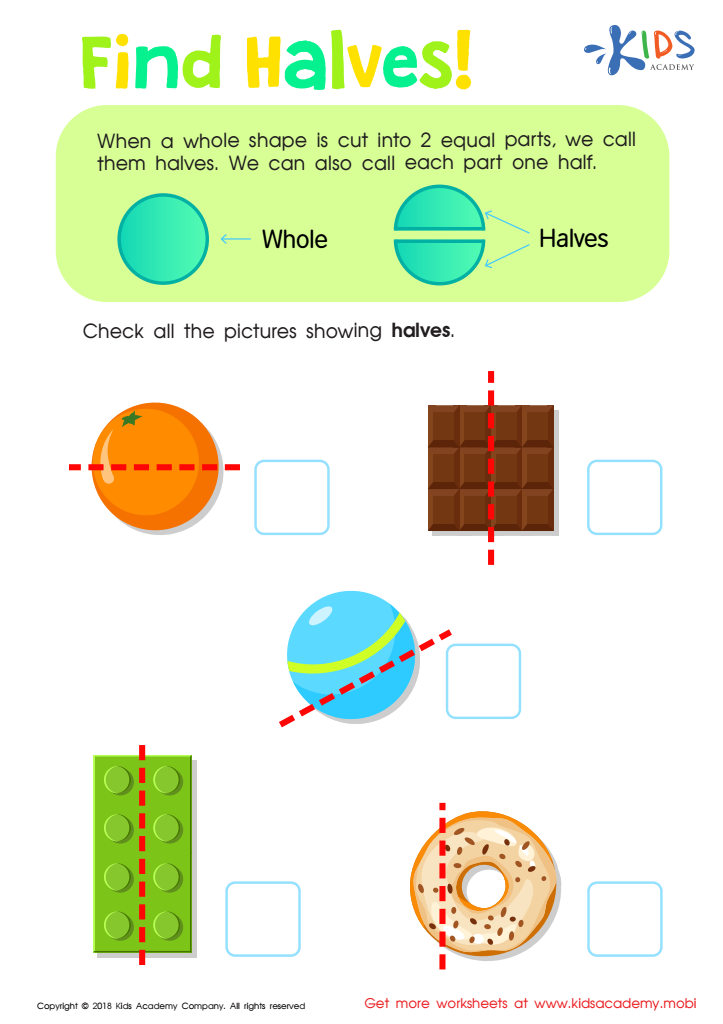

Find Halves Worksheet
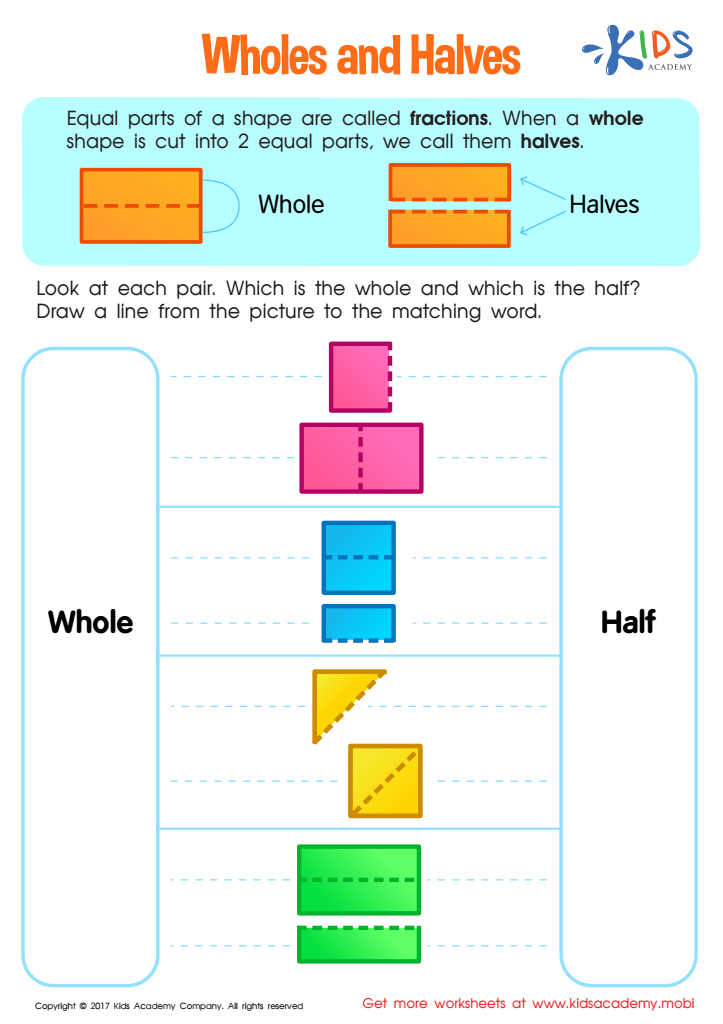

Wholes and Halves Worksheet
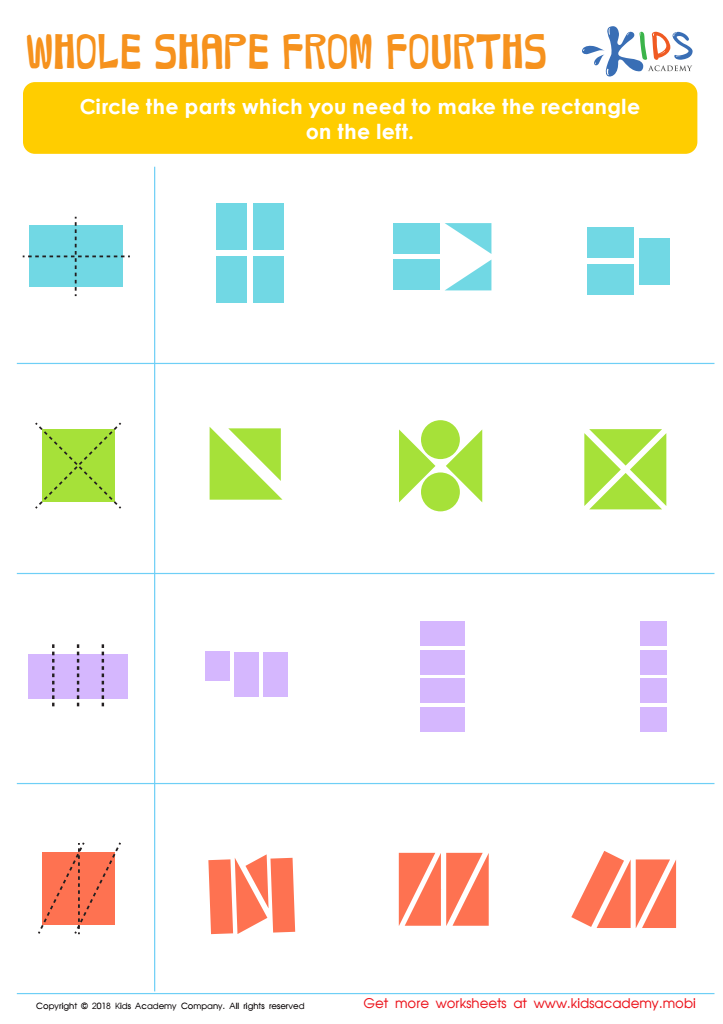

Whole Shape from Fourths Worksheet
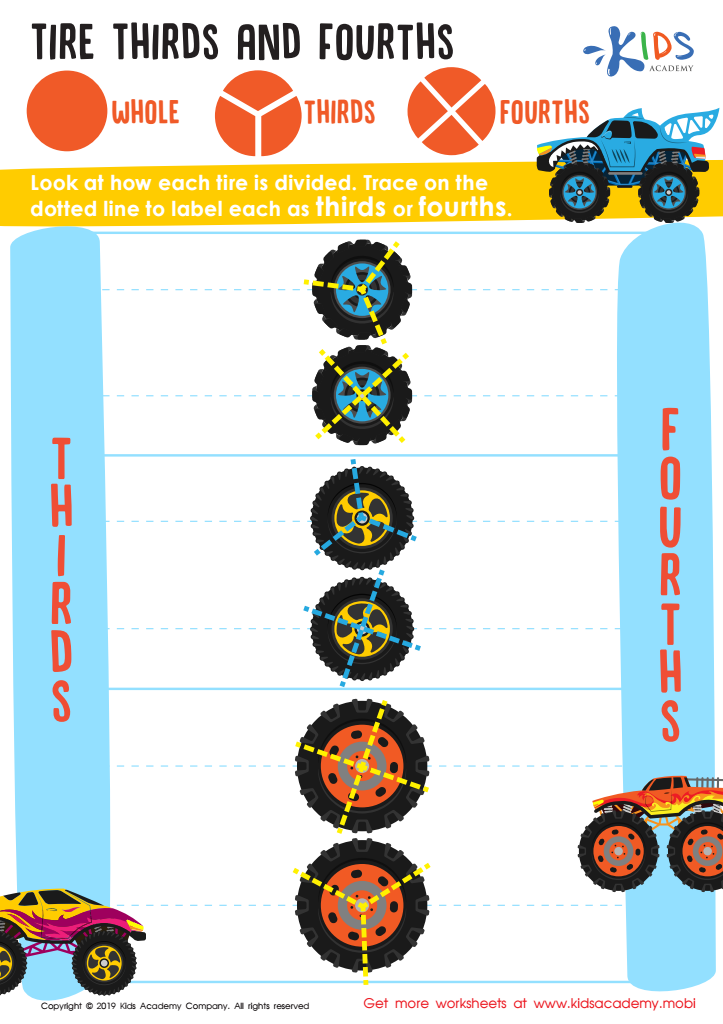

Tire Thirds and Fourths Worksheet
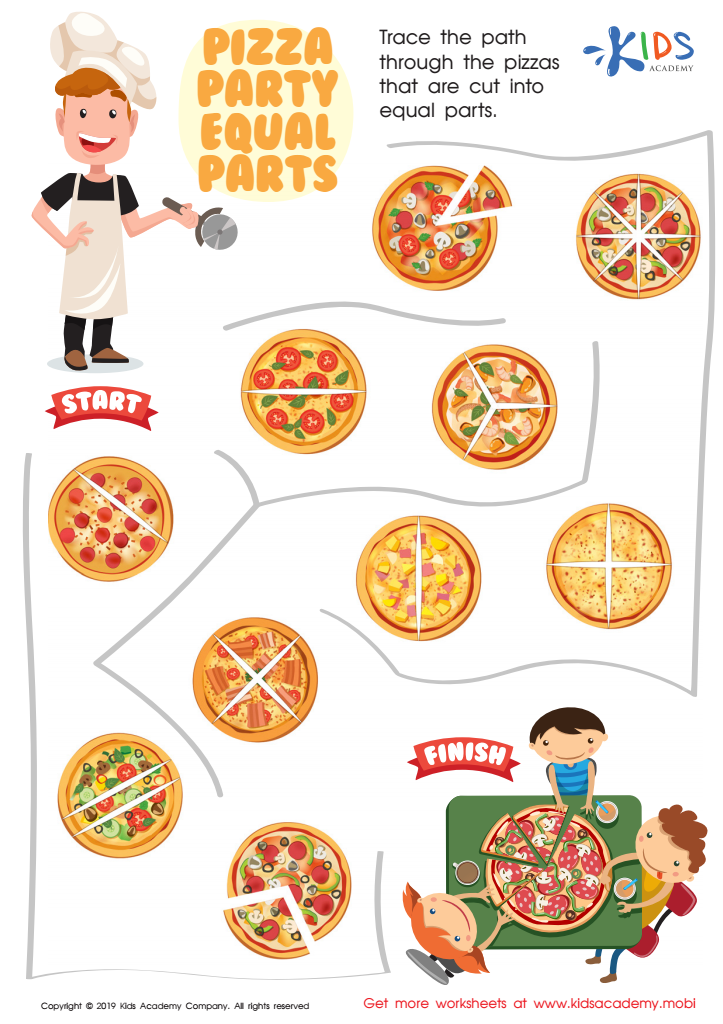

Pizza Party Equal Parts Worksheet
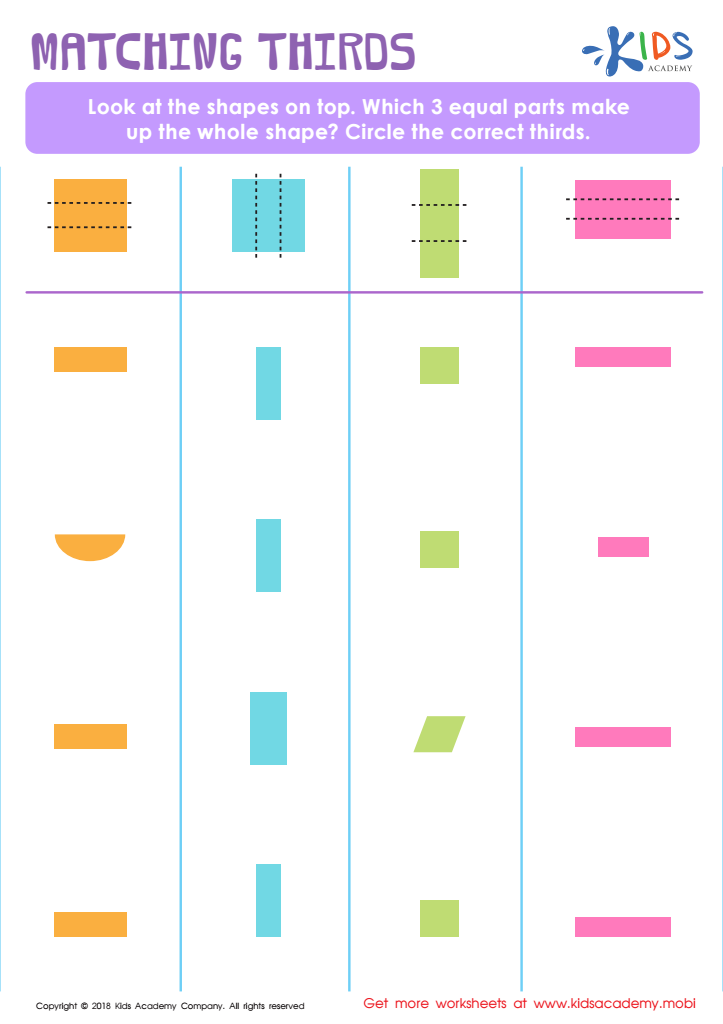

Matching Thirds Worksheet
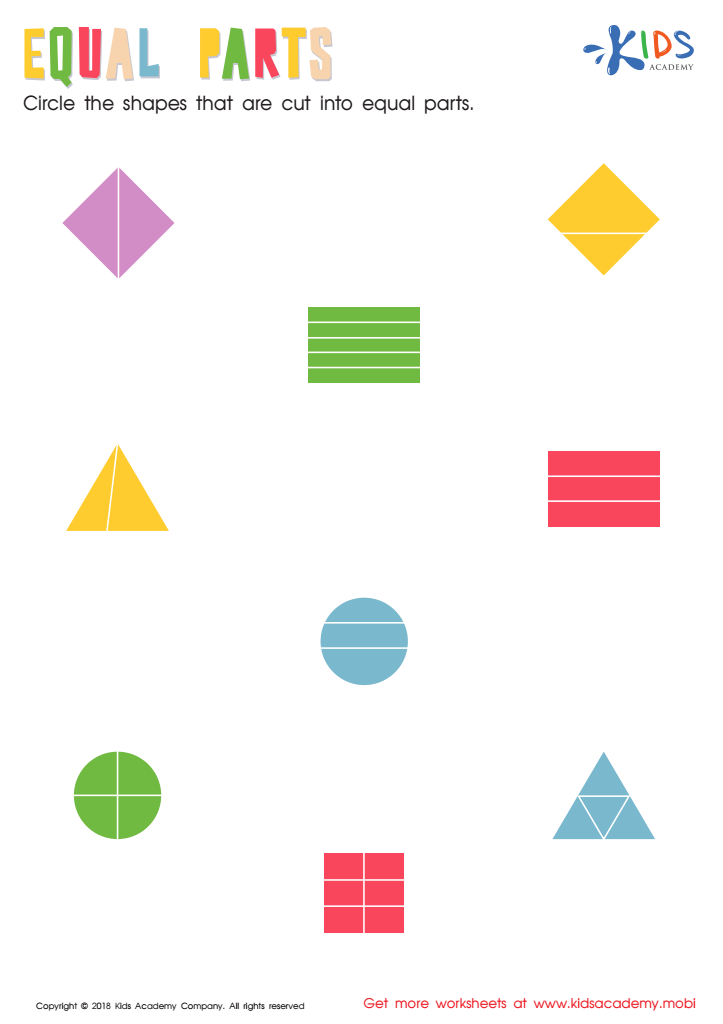

Equal Parts: Shapes Worksheet
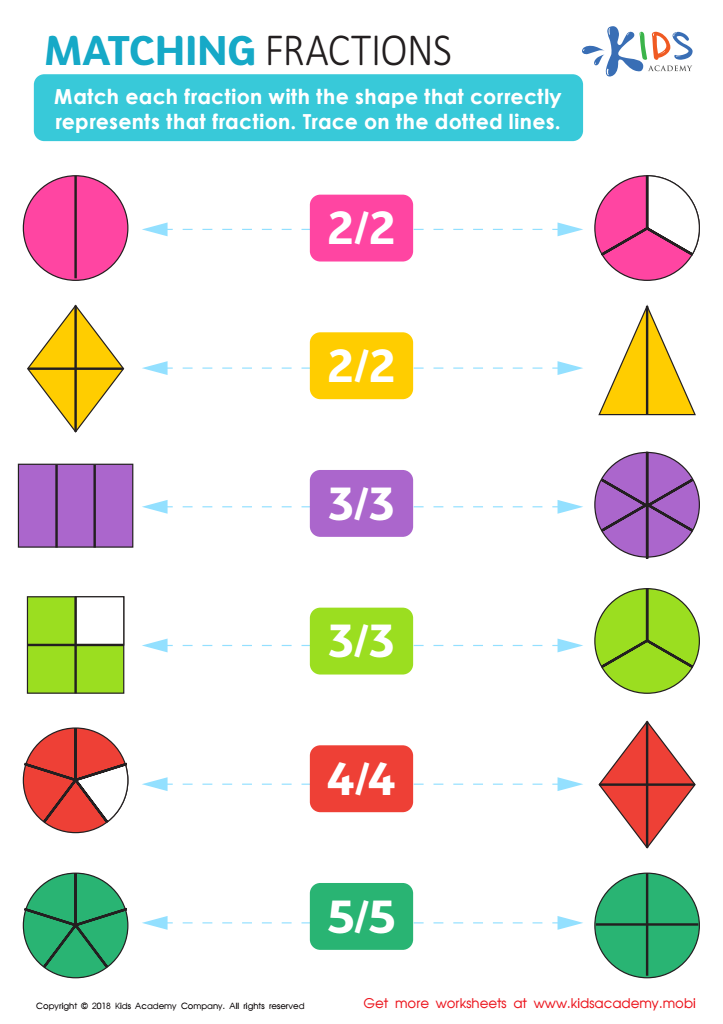

Matching Fractions Worksheet


Fractions: Shapes Worksheet
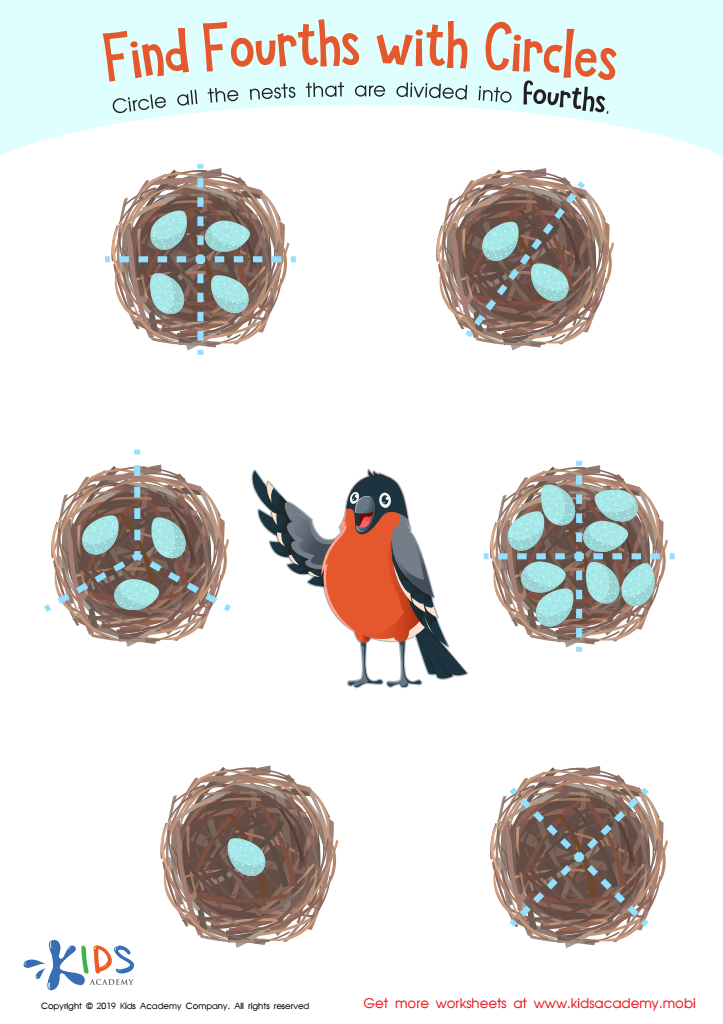

Find Fourths Circles Worksheet
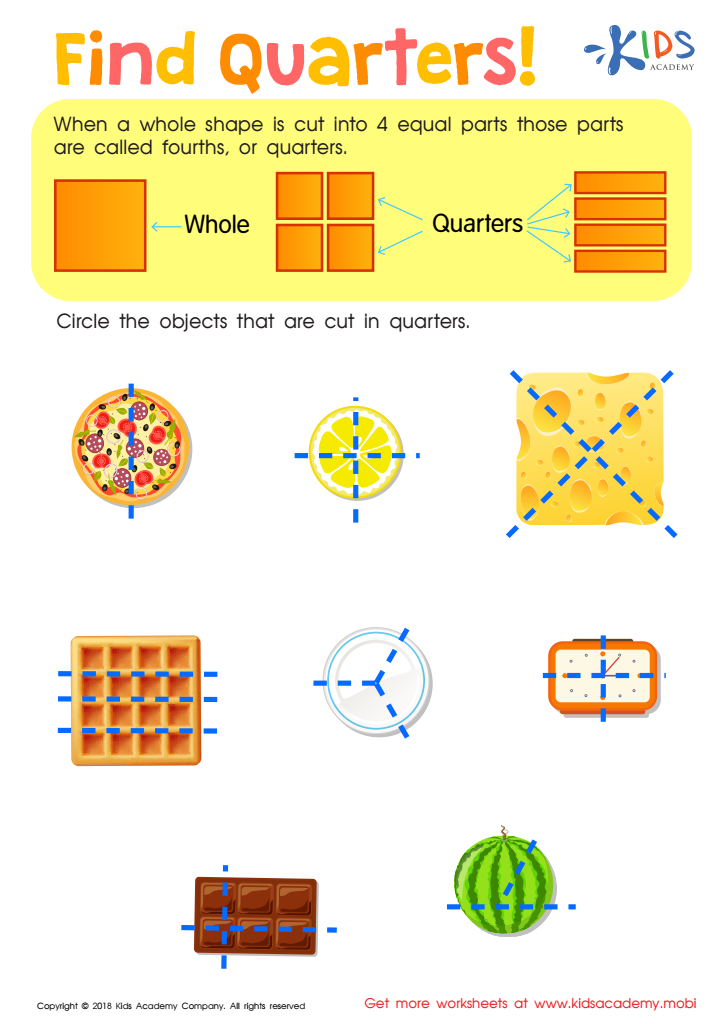

Find Quarters Worksheet
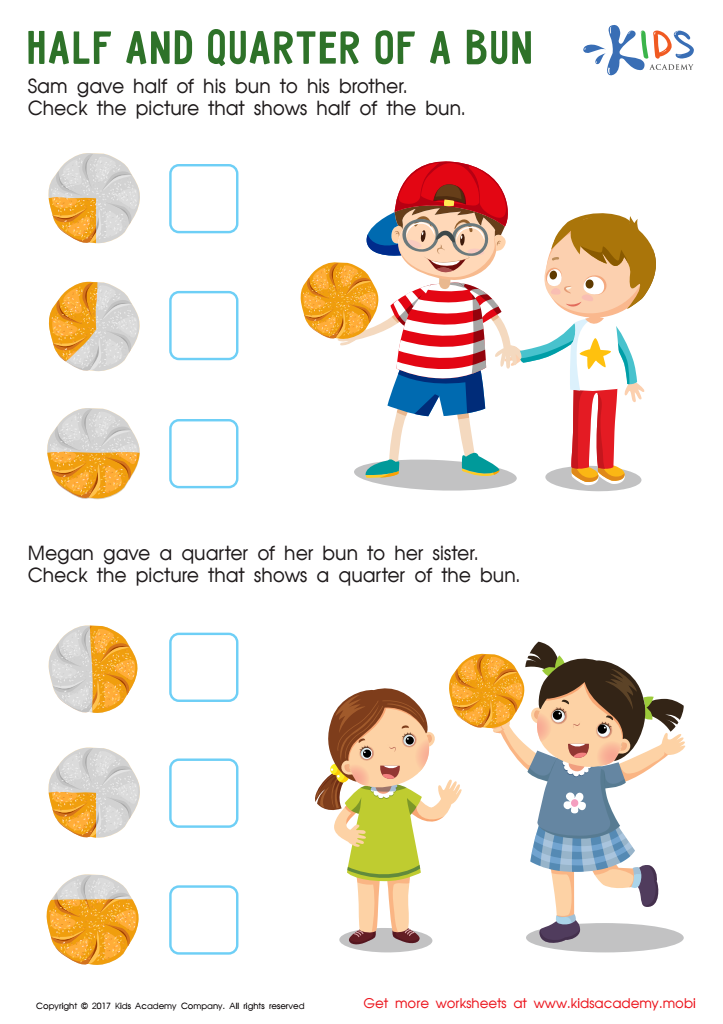

Half and Quarter of a Bun Worksheet


Match Fractions Worksheet
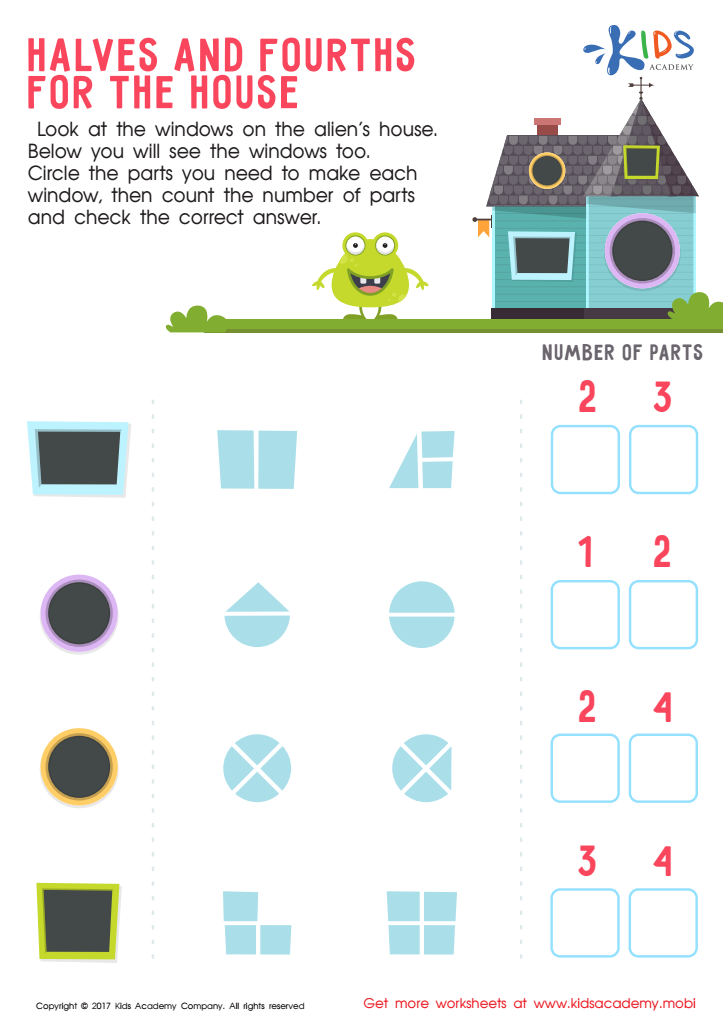

Halves and Fourths for the House Worksheet
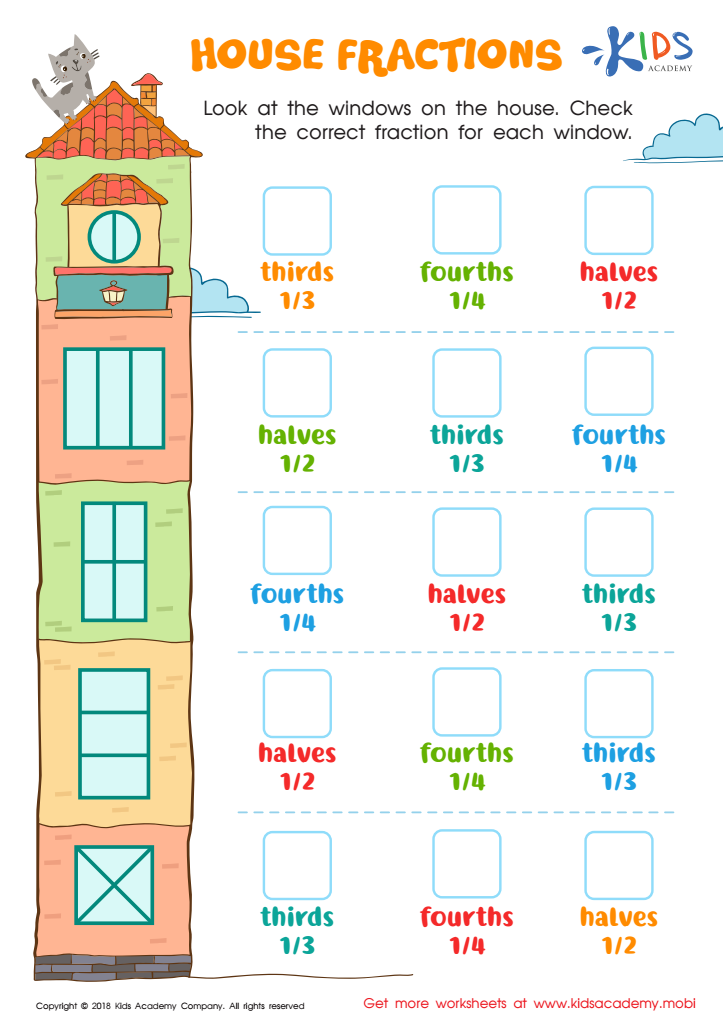

House Fractions Worksheet
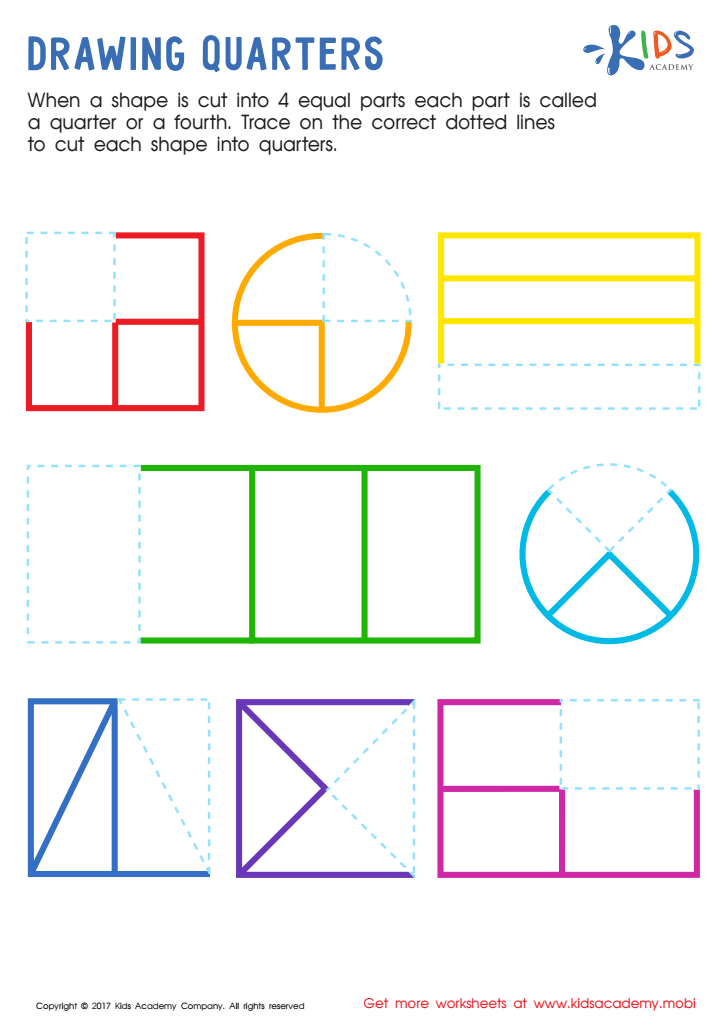

Drawing Quarters Worksheet
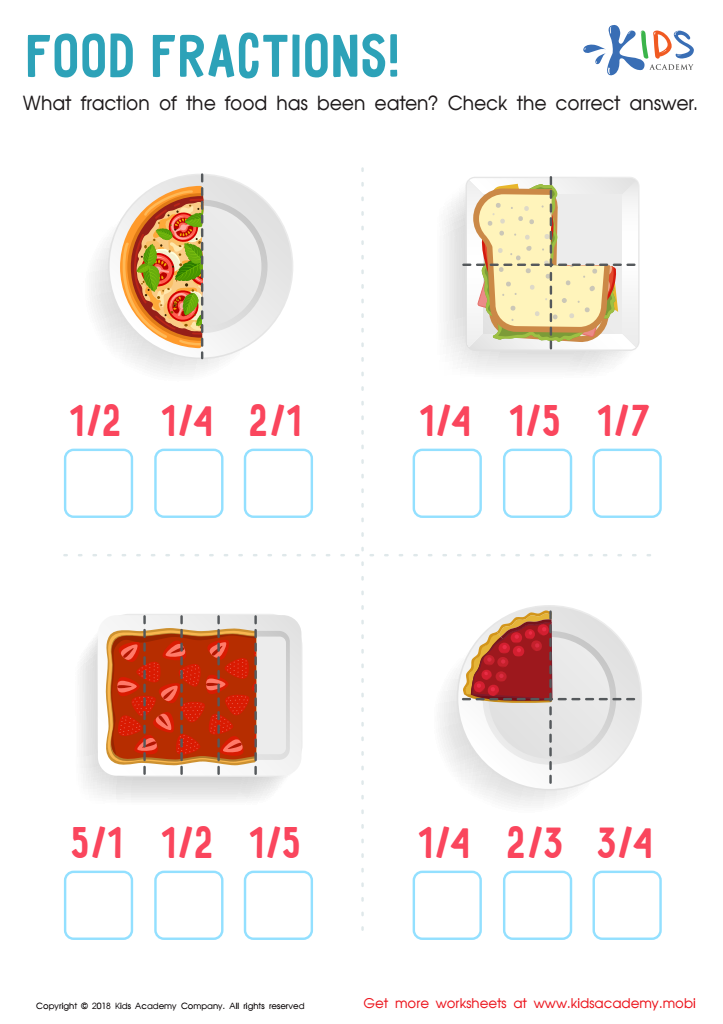

Food Fractions Worksheet
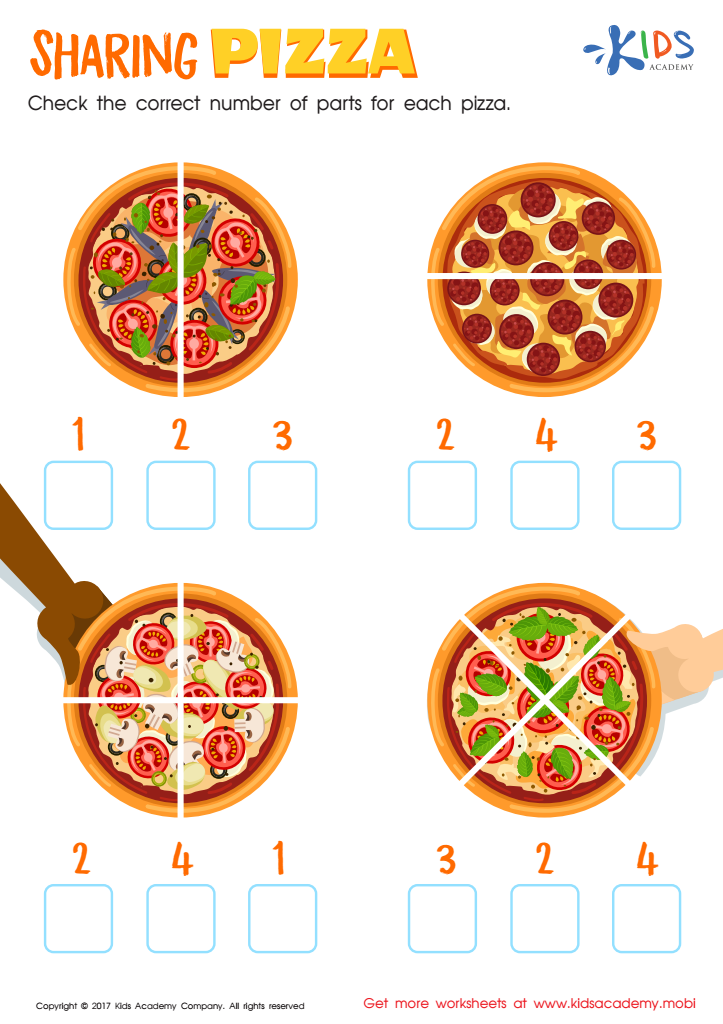

Sharing Pizza Worksheet
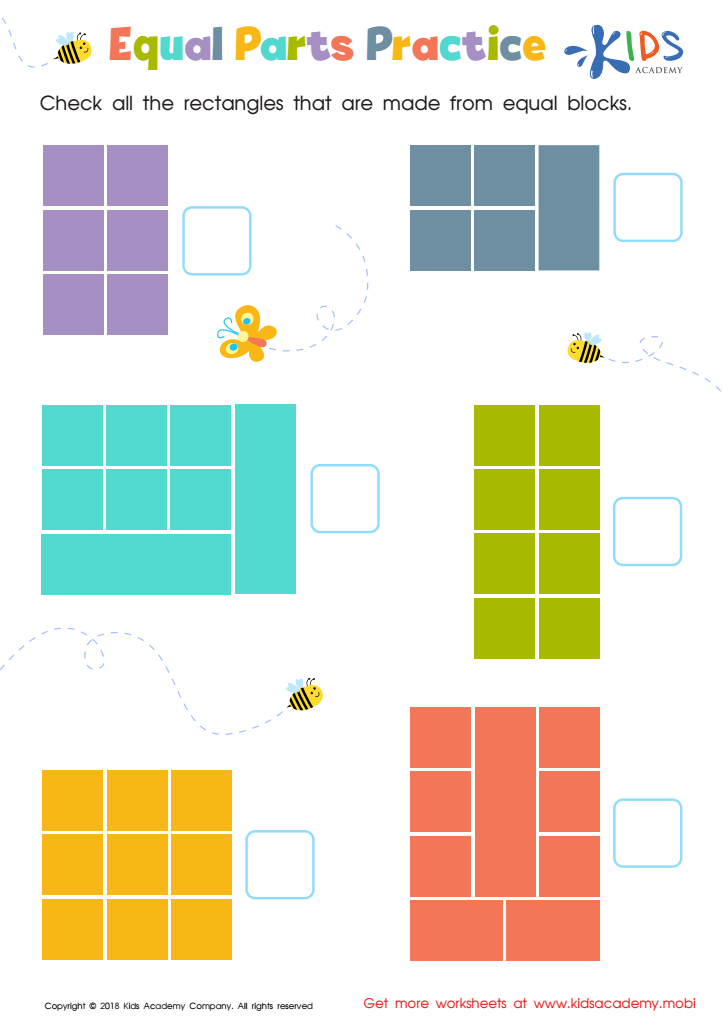

Equal Parts Practice Worksheet
Understanding fractions and geometry for children ages 5-9 is crucial because it lays a strong foundational framework for future mathematical learning and problem-solving abilities. At this early age, cognitive development is at a peak where young minds are particularly receptive to concepts of space, shapes, and parts of a whole.
Fractions help children grasp the notion that numbers can represent parts of a whole—essential for their understanding of division, ratios, and proportions later on. Learning geometry early exposes kids to concepts like shape recognition, spatial awareness, and the properties of various geometrical figures, which are foundational for more advanced subjects such as trigonometry and calculus.
Moreover, grasping these concepts enhances their logical thinking and reasoning skills. Encouraging an early familiarity with fractions and geometry also aids in improving problem-solving abilities since children learn to break down real-world objects and challenges into manageable parts. This translates into better academic performance not just in mathematics, but in other subjects too, including science.
Moreover, fostering an appreciation and understanding of these mathematical principles at a young age can spark a lifelong interest and confidence in math, reducing anxiety and making learning more enjoyable. Therefore, parents and teachers should prioritize fractions and geometry to positively influence their child's long-term educational journey.
 Assign to My Students
Assign to My Students




























